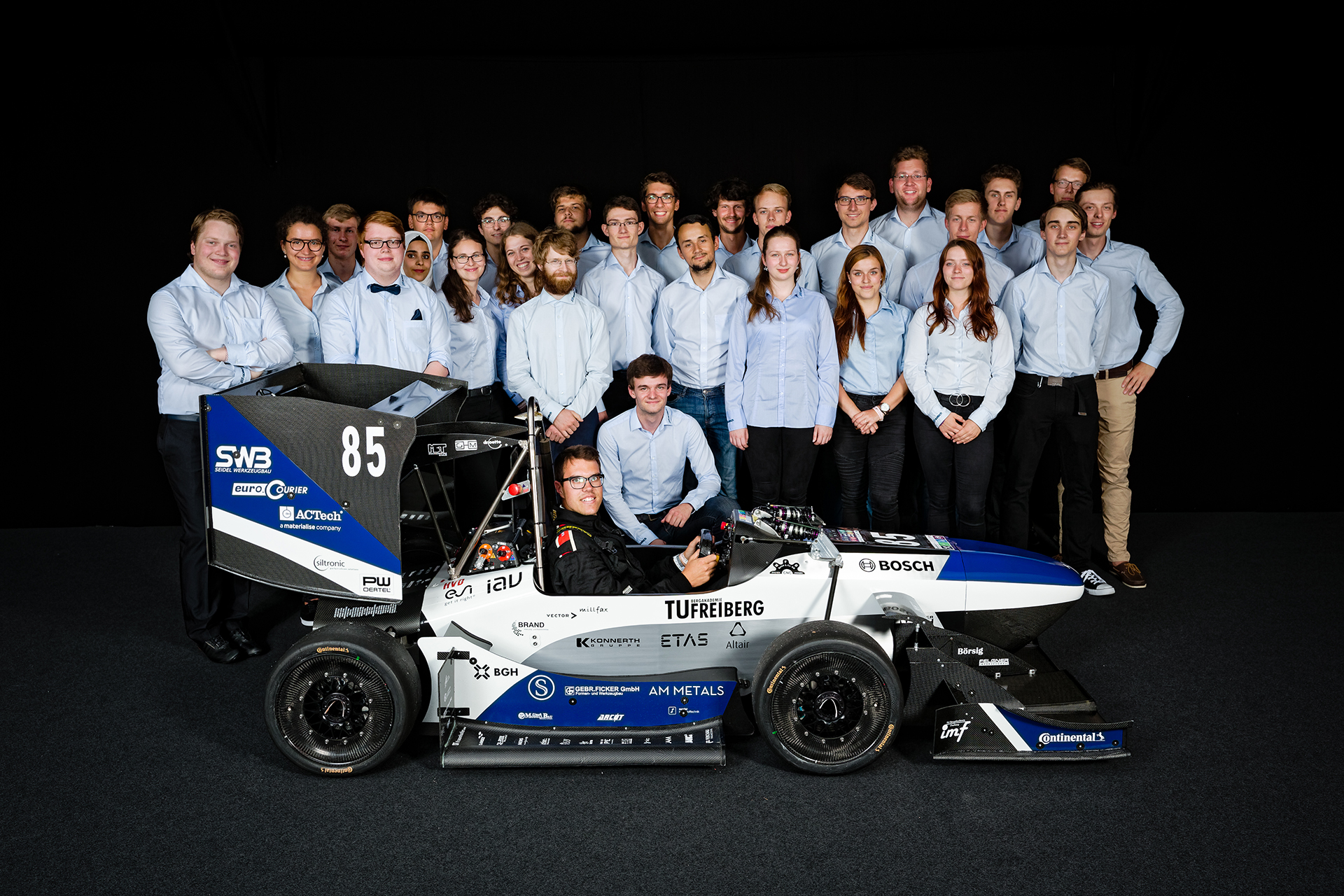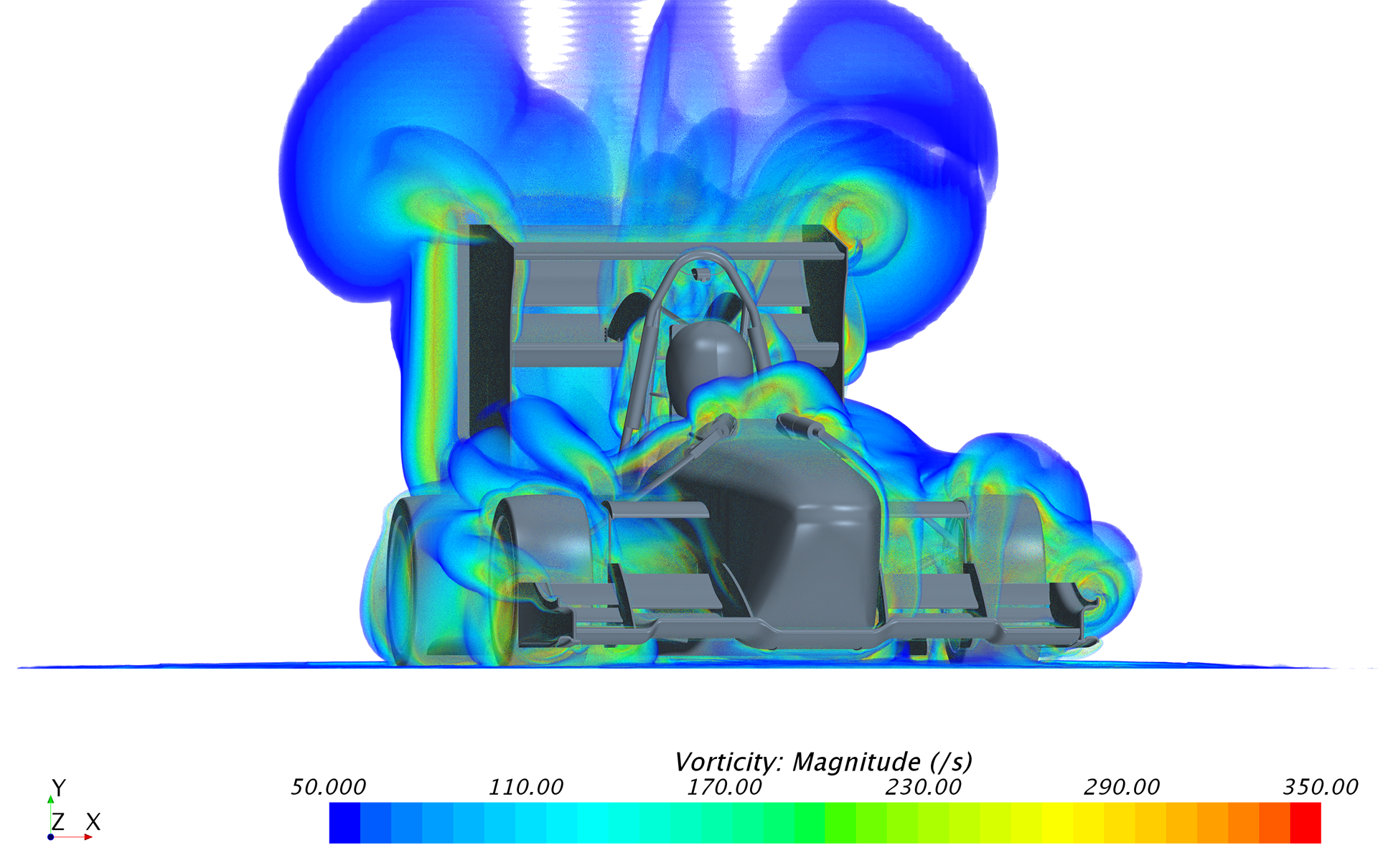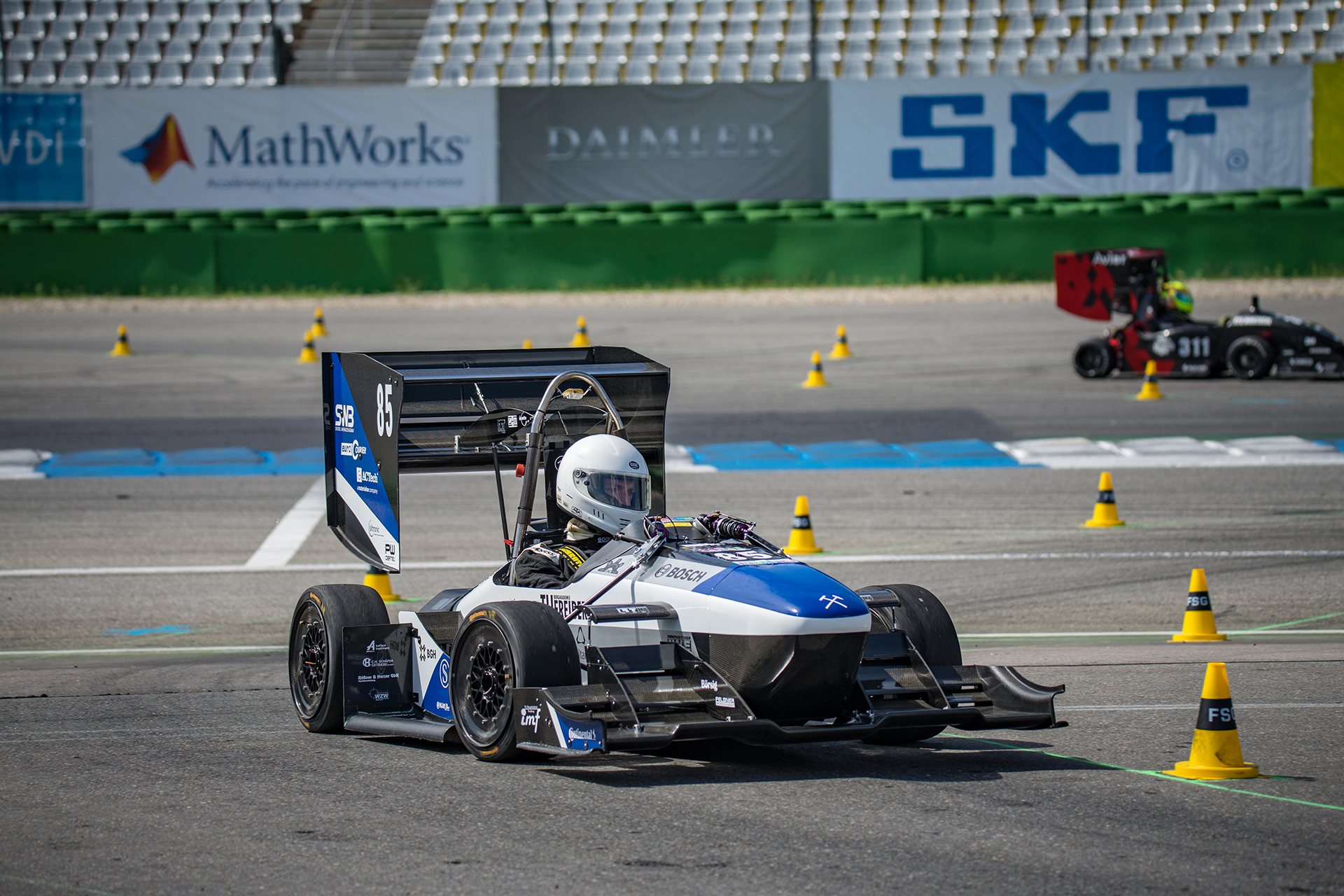MEGWARE & Racetech
Author: Dominik Kögler
General, sponsoring, technology
MEGWARE & Racetech: Podium Positions through computing power
We, the Racetech Racing Team, have made it our mission to annually prepare approximately 60 students, especially aspiring engineers, of the TU Freiberg for their future professional career (Image 1). To do this on an exciting and versatile project, we participate in formula student – the biggest international design competition.

Image 1: Teamfoto at Formula Student Germany 2019 © FSG Klein 2019
Each year we develop, -design and -manufacture a formula-style race car with an electric drive train by ourselves. At the race events, which take place at renowned racetracks around the world, teams are judged in dynamic and static disciplines. In the static events experts from the automotive industry, the supplier sector and motorsports assess the design, financial and business choices of the teams. In the dynamic disciplines, the performance, efficiency and reliability of the cars are evaluated.
Points in the dynamic disciplines are mainly gained through a reduction of lap times. On a fixed course this is only possible through increased accelerations in the longitudinal direction, meaning accelerating and braking, and the lateral direction, meaning cornering. All improvements on the vehicle can be traced back to either a reduction of weight or an increase in friction forces, which the tire can generate.
One of the development areas, which has gained more and more importance over the last years, is the car’s aerodynamics. The focus isn’t primarily on reducing aerodynamic drag but producing downforce. The interaction between the air and the car’s surfaces is used to generate aerodynamic forces, which force the car onto the ground. This increases the tire’s achievable friction forces. In general, the target is producing downforce as efficiently as possible. This means both the ratio between downforce and drag and the ration between downforce and weight of the aerodynamic components. To achieve this, simple wings became complex aerodynamic packages with a variety of intricate elements. Because many design iterations need to be examined up to the completed aerodynamics package, computational fluid dynamics simulations are used as a development tool (Image 2). Since this doesn’t require a wind tunnel or models of the car, efficient development is possible, if the simulation is regularly validated with test data of previous cars. However, these simulations with sufficient detail require a lot of computational resources. With the support of MEGWARE, we can simulate in greater detail and faster.

Image 2: CFD-Simualtion of the RT13 © Racetech Racing Team 2020
MEGWARE supported us with two rack servers in 2017, which are used for CFD-simulations. Since then we could rise to the top of the formula student through constant development on the car, amongst other things, aerodynamics. In the 2019 season we reached the following event positions with the RT13 (Image 3): 3rd at Formula Student East (Hungary), 4th at Formula Student Austria and 3rd at Formula Student Germany. These positions resulted in a 4th place out of 201 Teams on the World Ranking List of Formula Student Electric, making us the 2nd-best team in Europe.

Image 3: The RT13 at the Endurance event of FSG 2019 © FSG Härtl 2019
These achievements wouldn’t have been possible without sponsors like MEGWARE. At this point, we’d like to say thank you and are looking forward to future cooperation.
[wp_social_sharing social_options=’facebook,twitter,googleplus’ twitter_username=’racetechracing’ facebook_text=’Auf Facebook teilen’ twitter_text=’Auf Twitter teilen’ googleplus_text=’Auf Google+ teilen’ icon_order=’f,t,g,l,p,x,r’ show_icons=’0′ before_button_text=” text_position=” social_image=”]